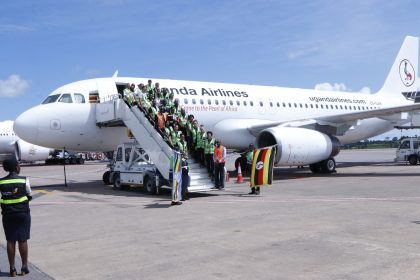Why we must deliver universal Digital Travel, from everywhere to anywhere

By Jeremy Springall,
Senior Vice-President, Border Management, SITA
 There is a palpable buzz around the industry’s digital direction, with the UN International Civil Aviation Organisation (ICAO) mandated as the world’s driving force and standards setter for universal and interoperable Digital Travel Credential (DTC) solutions for secure and seamless journeys across the world, enabled by mobile and biometric technologies.
There is a palpable buzz around the industry’s digital direction, with the UN International Civil Aviation Organisation (ICAO) mandated as the world’s driving force and standards setter for universal and interoperable Digital Travel Credential (DTC) solutions for secure and seamless journeys across the world, enabled by mobile and biometric technologies.
Digital identities are meant to let us travel from anywhere to everywhere – by air, land or sea – without needing to show our physical passports, visas, ID cards, health forms, boarding passes, or driver’s licenses. They will be the master key for unlocking every stage of the journey, from the earliest intention to travel, to destination activities and the return journey.
Unstoppable momentum
The travel industry’s digital transformation continues to accelerate and is gaining unstoppable momentum, as Digital Travel – harnessing digital identities – becomes mainstream. This is great news for everyone. Digital Travel is essential for governments and the travel industry to tackle the challenges of phenomenal growth in traveller numbers, a reliance on physical documents, staff shortages, government austerity and to meet rising expectations for ‘joined up’ intermodal journeys and other efficiencies.
The advantages are secure and stress-free travel, with passengers completing processes securely off-airport, meaning fewer queues; and the industry gets pre-cleared, ‘ready-to-go’ travellers, with faster approvals and risk assessment before departure. The resulting efficiencies will deliver new levels of seamless and secure travel and significantly relieve the pressures on travel industry infrastructure, resources, and costs, while encouraging the economic benefits of travel and tourism.
Passenger positivity
Passengers are eager to embrace digital journeys. SITA’s Passenger IT Insights 2022 survey indicated increased passenger confidence in identity control (up 11%) and bag collection (up 9%) since 2016. Both have witnessed the greatest rise in tech adoption over the last few years. It also found passengers’ comfort with biometric identification across their journeys averaged 7.3 out of 10, where 10 is the most comfortable.
The latest SITA and IATA global surveys reported over 80% of passengers would share their immigration information to speed up airport arrival processes; 66% want to obtain visas online before travelling; and 75% want to use biometric data instead of passports and boarding passes.
Pioneering Digital Travel
Digital Travel is a critical area of focus for SITA, which provides the next-generation of self-service technology infrastructure on which digital identities rely – with integrated data-driven, mobile and biometrically-enabled self-service touchpoints for check-in, bag-drop, border control, boarding and more. All of them developed to meet ICAO’s global standards (which are also endorsed by the International Air Transport Association and the Airports Council International) to help governments avoid the inevitable pitfalls that so often characterise parochial solutions.
Over 70 governments and the G20 nations employ these digital border solutions to enable Digital Travel along with SITA’s biometric and mobile-driven passenger processing solutions which can be untethered from fixed points in airports, rail and cruise-line terminals and other gateways.
A community approach is essential
With the rise of inter-modal services, for Digital Travel to become a universal reality, the industry, border and security authorities, operators and other role-players must adopt a community approach to evolve a universal and re-usable digital identity for every trip – by air, rail, sea, road or a combination of them – instead of parochial, standalone initiatives for one airport or transport operator, covering a single journey.
It is an approach successfully applied with SITA’s pioneering work in the Netherlands (KLM’s AirTravel) and in France with the SNCF Voyageurs “Train+Air” service and which we continue to apply. It relies on collaborative trials and proofs of concepts with customers, to provide digital passenger processing and border solutions for the future. This why we continue to identify partners and potential PoCs to advance the digital cause for the travel industry.
Putting theory into practice in Aruba
Another SITA Digital Travel initiative underway involves using a mobile app and secure SITA Trust Network to pre-clear travellers visiting the Caribbean island, Aruba. In collaboration with the Government of Aruba and tech partner, Indicio.tech, we are providing travellers with a verified, durable and privacy-preserving digital identity on their mobile devices which they can use to fast-track their arrival processes at Aruba’s airport and access many of the islands participating venues, including restaurants, shops and clubs.
SITA will be expanding this to include ICAO’s DTC, enabling airport authorities, airlines, and Aruba’s government to let travellers securely share their biometric and biographic information to automate their journey. Biometric boarding and eGates at immigration entry/exit, mean that travellers can keep their passport in their pocket during their journey for easier facilitation at several typical pain points during the trip.
This is an exciting initiative, emphasising the criticality of bringing industry stakeholders together. And again, that is precisely the point: if our industry and governments are going to deliver and derive the benefits of global Digital Travel everywhere and anywhere, with interoperability and universality at its core, then it must do so as a collaborative community.

 Brussels Airlines to announce Nairobi service
Brussels Airlines to announce Nairobi service
 SITA promises enhanced travel experience after Materna acquisition
SITA promises enhanced travel experience after Materna acquisition
 Saudia’s 105 aircraft order stretches A320neo lead over rival Max
Saudia’s 105 aircraft order stretches A320neo lead over rival Max
 Boeing refuses to pay hackers $200 million for stolen Data
Boeing refuses to pay hackers $200 million for stolen Data
 Uganda-Tanzania announce date for second joint business forum
Uganda-Tanzania announce date for second joint business forum
 Uganda Airlines leased A320 arrives in Entebbe
Uganda Airlines leased A320 arrives in Entebbe
